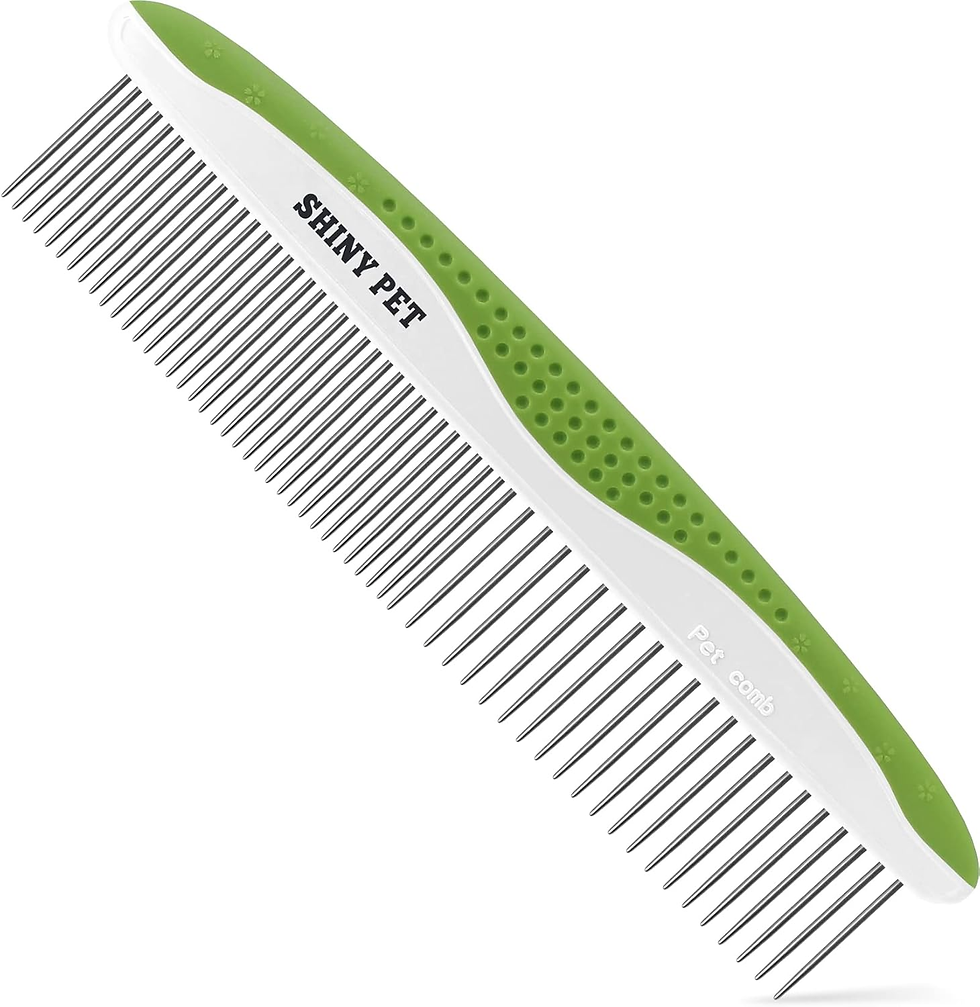Nutrition- A Biologically Appropriate Diet
- Beth@felinitycatcare
- Jan 17, 2020
- 4 min read

WHY IS NUTRITION IMPORTANT?
Nutrition might not be a topic that one might expect to find in a pet groomers blog, but groomers often are tasked with tackling problems that could have been prevented or minimized by an optimal diet.
For instance, pet parents often call us for butt trims (Brazilian services) because their cat can no longer take care of their own hygiene needs. Sometimes this is a lifelong issue due to breeding that has produced extraordinarily long fur in inconvenient areas. However, many times this issue occurs in an aging cat because the cat is having trouble reaching their butt. This can be a result of age-related arthritis, or it can be a result of the cat becoming obese. Obesity is not a normal part of aging and can be prevented by feeding a diet that can be well metabolized throughout the cats lifespan.
Dandruff can also be minimized or prevented by feeding a diet that is rich in the nutrients that keep cats’ skin healthy and supple.
WHAT IS AN OPTIMAL DIET?
Cats are what is called “obligate carnivores”. This means that the majority if their diet must be meat for them to remain healthy. If they were living in the wild, cats would hunt small prey such as rodents and insects to get their protein. They also eat a small amount of a variety of grasses for fiber and various vitamins. A diet high in carbohydrates can lead to health issues such as obesity, diabetes and inflammation that can lead to arthritis as cats age.
With this in mind, when purchasing or making food for your cat, it’s best to stick close to what nature intended for their bodies. This is what veterinarians call a “biologically appropriate” diet. There is a lot to consider when choosing what foods to serve and on what schedule.
In nature, a hunting cat would not have food available to them at all times. They might catch prey once a day, twice if they got lucky. A period of fasting is beneficial to the cat’s metabolism. So, leaving food out and available for cats to “graze” slows their metabolism and can contribute to obesity issues down the road.
So, what is generally recommended is to give two meals a day (about 12 hours apart) of soft, protein based food. Hard food, or kibble should not be kept out all day long and should be given only in small amounts because hard food is typically high in carbohydrate content.
WHAT TYPE OF FOOD? READ THE LABEL:
When deciding what food to buy, aim for as much protein, fat/oils and moisture as possible. This is the closest to cats’ natural diet in the wild.
If you’re going for a protein-based diet, reading the label is important. As with any food label, ingredients are listed from the most to the least. This means that the first 5 ingredients of any label are the majority of what the food contains. When choosing a high-protein diet, the first 3-5 ingredients need to be meat.
BEWARE OF “FAKE MEAT” AND FILLERS:
You will see a lot of pet foods that contain meat by-products in the first 5 ingredients. It sounds like this might be meat, but it’s not. What is a by-product? The Association of American Feed Control Officials (AAFCO) defines meat by-products as: “the non-rendered, clean parts, other than meat, derived from slaughtered mammals. It includes, but is not limited to lungs, spleen, kidneys, brain, livers, blood, bone, partially defatted low temperature fatty tissue, & stomachs & intestines freed of their contents”. https://talkspetfood.aafco.org/byproducts
In other words, they are not high-quality meat and are often not meat at all.
Foods sometimes contain fillers such as pumpkin, corn, tapioca, potatoes and rice in the first 5 ingredients. These ingredients are what is known as “fillers” that add bulk to the product, but have very little nutritional value for cats.
Many food makers use some vegetables, fruits and minerals as a way to naturally add the trace vitamins that cats need, rather than adding manufactured vitamins. These are preferable, since they are more easily digested and thus are more readily used by cats’ bodies.
HOW CAN I MAKE THE SWITCH?
All cat parents know that cats are creatures of habit and are also very stubborn. Once they have an established routine, changing that routine is an epic battle!
There are many books and articles out there that give good tips on how to accomplish this (see resources below).
It can all be summed up in two words: perseverance and patience!!
Most cats don’t respond well to sudden changes in diet. Gradual changes will make it easier to transition to healthier options and schedules. There is one exception to this rule, all day grazing. Your cat will never eat the foods that are more healthy, if they know that they can just refuse them and continue to graze on the carbohydrate buffet that they are given. The best start to a healthy food transition is to begin with enforcing the fasting periods.
Yes, your cat will whine, complain, demand and hold grudges until the transition is complete, but the health benefits are astounding.
Often groomers see a marked improvement in fur and skin health in as little as a month after transition to a protein based, soft food diet has occurred.
Here are some resources that will help.
Resources:
Books that contain detailed information and even recipes.
· The New Natural Cat- A complete guide for finicky owners. By Anitra Frazier and Norma Eckroate
· Natural Health for Dogs & Cats. By Richard H. Pitcairn
· Natural Healing for Dogs & Cats. By Diane Stein
How to transition diets
Meat By-products:
Benefits of a raw diet



Comments